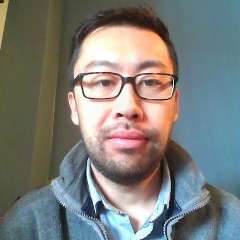What is perhaps even more remarkable than the unabashed grandeur of the new Parsifal at the Lyric Opera of Chicago is the degree to which its spectacle draws on the images and genres of 20th-century media technologies, not only of film and television but also popular music. This is – perhaps fittingly – especially true of Klingsor’s lair and the second act in general, in which the spiteful failed knight appears out of an orgy of neon tubing like a faded 70s space-rock frontman, complete with sparkly red boots. The impressive kitsch of this apparition is followed by the rather beautiful invocation, by the Flowermaidens, of Loie Fuller, the silent film-era dancer who spun hypnotically in veils tinted by hand to shimmer in a riot of colors.
But the production’s rich visual memory is not simply about reference. It is used to consistently and inventively fill the three axes of the stage space. The challenge in staging Wagner is to both create enough visual interest during often prodigiously long set pieces, and at the same time reserve enough visual novelty to structure the larger periods, the acts and the opera as a whole. Director John Caird and set designer Johan Engels find, time and again, gestures that are both expressively powerful and structurally clear.
Musically, this Parsifal is top notch. The stand-out for me is Thomas Hampson as Amfortas; here is an actor who can control the stage simply by standing there. His progression from the entrance of a feeble lord barely capable of speech to the enraptured cries at the end of the act is nothing short of a complete transformation. But it is so hard to pick favourites when the cast is this good: Paul Groves’ hilariously clueless Parsifal in the first act, and his depth in the third; Daveda Karanas’ wild but determined Kundry; and Kwangchul Youn’s terrific Gurnemanz, sung with a perfect voice for Wagner recitative, punchy and smooth.
The visual delights stuffed into this one opera (although it is a very long opera) might be enough to sustain a stingy opera house’s whole season. There are, variously, massive trees that transform into Willy Wonka-esque tubes, beautiful asymmetric swans, and a gorgeous effect with a semi-transparent mirror. But what is most impressive about this production in the end is its creation of a visual register that is bold enough to organize the experience of five hours of continuous music: the verticality of the second act against the horizontal plane of the first and third, the red of the middle act to contrast its bluer neighbors. It is possible, I think, to acknowledge that Parsifal contains some really wonderful stretches while granting that its pageantry and deliberation will occasionally cause the senses to numb. Caird and Engels have a modern touch and a dramatic flair; Parsifal can use it.


